The recent SEPTA fantrip on the Media trolley line, which used an LRV with a red overwrap paying tribute to the Philadelphia and West Chester cars that began service there 100 years ago, got us to thinking about how trolley service got started in this area. Today’s Media and Sharon Hill lines are the last remnants of a much larger system that began with a line to West Chester and also included a shorter branch to Ardmore.
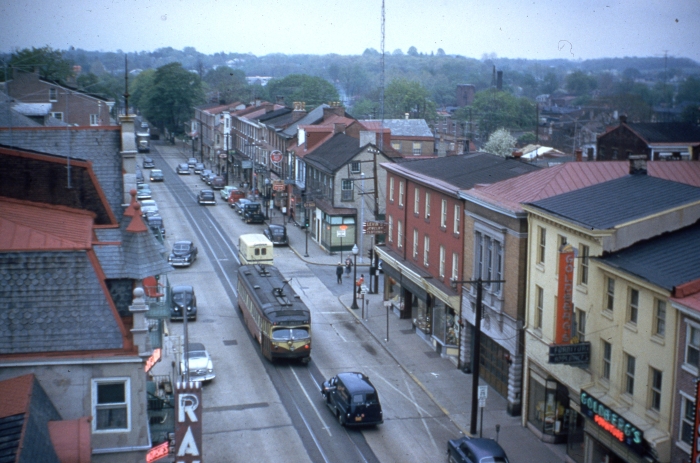
A Philadelphia Suburban postwar St. Louis car on Gay Street in West Chester in May, 1954.
When the Red Arrow trolley line to West Chester (PA) was cut back in 1954, it was to some degree a victim of its own success. Along with West Chester Pike, which it ran along, the trolley helped the entire region grow and become prosperous starting in the 1890s.
West Chester Pike itself began life in 1848, as an improved road connecting the western edge of Philadelphia and West Chester, a distance of about 20 miles. This was a commercial venture, a toll road; the “pike” being a board used as a gate to prevent travelers from passing through without paying a toll. Upon being paid, the gatekeeper would “turn the pike,” to let you through, thus inspiring the word turnpike, still in common use in the Eastern US.
Before the West Chester line was electrified in the 1890s, rail service had begun as early as 1859 with horsecars, replaced in 1865 by steam “dummies.” (A steam dummy is a diminutive steam engine, often disguised or modified in such a way as to try not to scare horses.) Until electric streetcars became practical in the 1880s, however, these lines were not particularly successful.
A. Merritt Taylor took control of the Philadelphia and West Chester in 1899, and three generations of the Taylor family ran the trolleys right up until 1970, a long time after private operators had stopped making a profit in other parts of the country. By then, the operation had been reorganized under the name Philadelphia Suburban Transportation Co., which was commonly known under the brand name of “Red Arrow.” These same lines are operated today by SEPTA under public ownership. Red Arrow also included the Norristown High-Speed Line. (To read an obituary of Merritt H. Taylor Jr., click here.)
The Taylors believed in electric rail transit, and were able to keep them profitable far longer than many of their contemporaries. A. Merritt Taylor expanded trolley service with the Ardmore branch in 1902, followed by Media in 1913 and finally Sharon Hill four years later. Today’s Media and Sharon Hill routes are thought of as “light rail” but they have many of the characteristics of classic interurbans, being a mixture of private right-of-way, street running, double track, single track, and even some side of the road trackage.
Much of the West Chester line was single track with passing sidings, especially the outer portion. As the area continued to grow rapidly in the postwar era, the need to widen West Chester Pike became evident. Starting in 1948, Red Arrow was under a lot of pressure to either make a major investment in relocating and double-tracking the West Chester line, or let the highway take the space occupied by the trolley.
Although Red Arrow was profitable, the funds were not available to do this, and therefore most of the line was run with buses starting in 1954. Some trolley service continued to the Westgate Hills shopping center until 1958.
Railcar availability also factored into some abandonments. It is said that the Taylors could have kept the short Ardmore branch in 1966 if they could have found two more suitable cars. The two surviving former Illinois Terminal double-end PCC cars were considered, but did not have doors on both sides, a Red Arrow requirement. So the last Ardmore trolley ran on December 30, 1966.
The Ardmore branch had a section of private right-of-way, which became part of a busway, an early example of today’s “bus rapid transit” perhaps.
Cutting back the West Chester and Ardmore lines made the Red Arrow depot at Llanerch somewhat superfluous, and it was demolished in 1971. SEPTA consolidated operations of the Media and Sharon Hill lines at 69th Street Terminal, where they remain today.
At a time when cities across the nation are either building new light rail lines, or contemplating them, it’s interesting to speculate what might have been, if we could have just kept some of what we once had- and what we one had included the historic trolley between Philadelphia and West Chester. It’s a shame that, having helped build up the area, the West Chester trolley is no longer around to continue to build on that success.
-David Sadowski
PS- If you would like to read CERA Bulletin 88, which features the Red Arrow trolley lines, clickhere. However, keep in mind that this is a 10mb file in .PDF format.
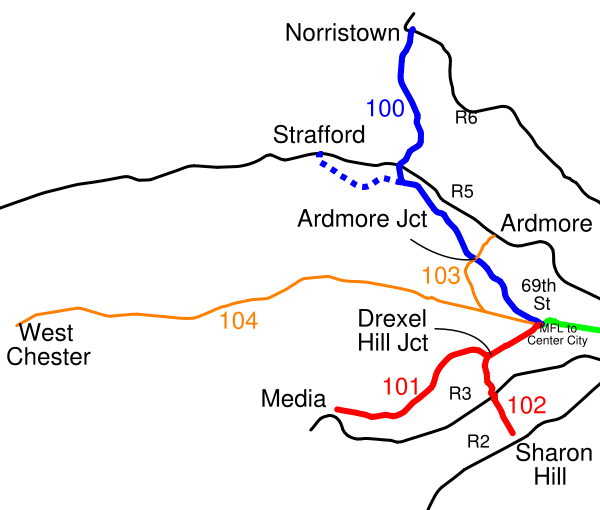
A map showing the historic Red Arrow trolley lines (from the Wikipedia).
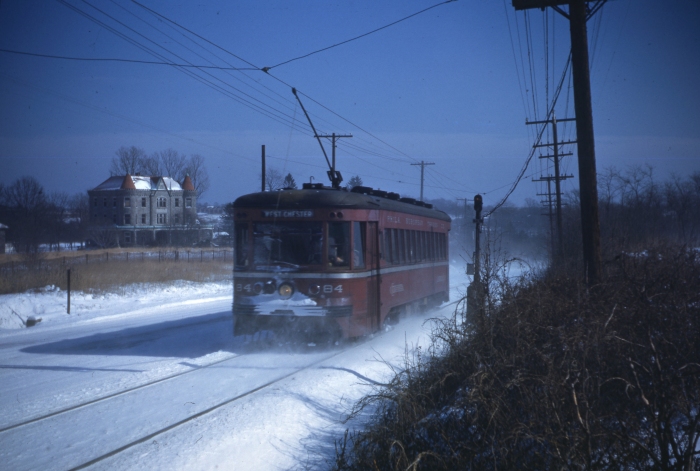
PST 64 zips through the snow alongside West Chester Pike in the 1940s.

PST 24 on one of the “last runs” on the West Chester line in June, 1954. The location is where Route 202 crosses West Chester Pike.
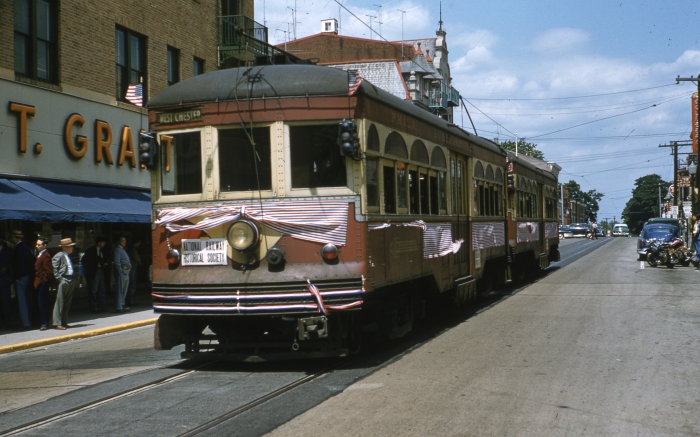
PST 66 and 76 on an NRHS fantrip in West Chester on June 6, 1954, two days after regular service ended.
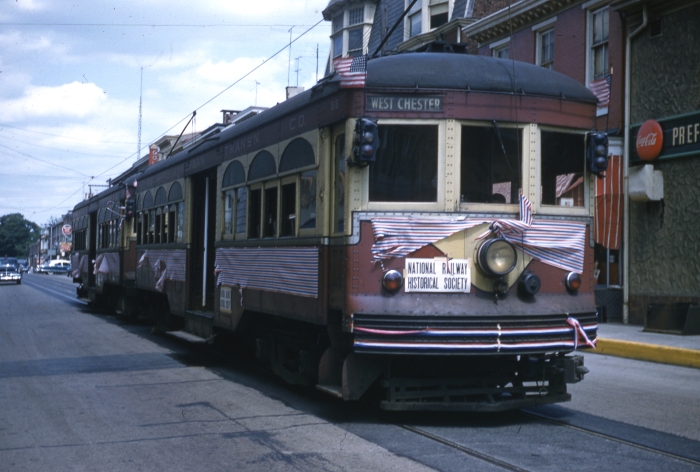
PST 66 and 76 on an NRHS fantrip in West Chester on June 6, 1954, two days after the end of regular service.
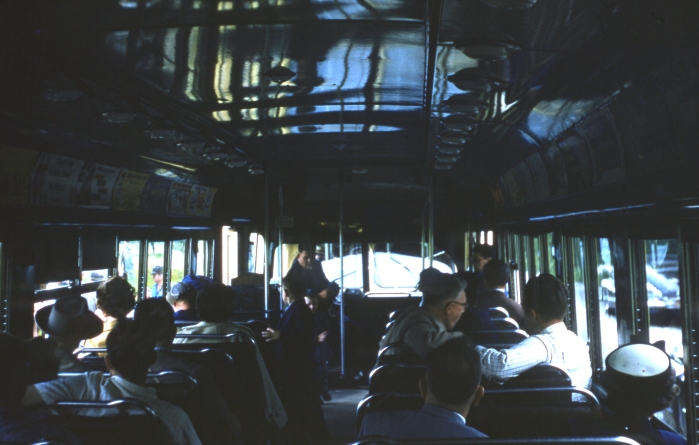
The Red Arrow Lines had excellent ridership in the 1950s.
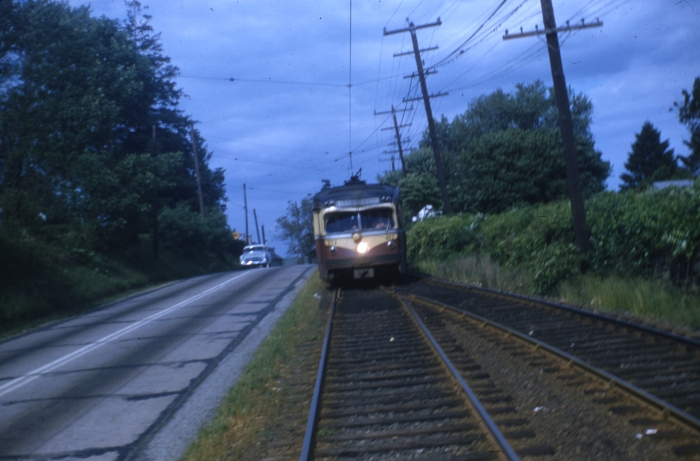
PST 21 on side-of-road trackage alongside West Chester Pike in June, 1954.
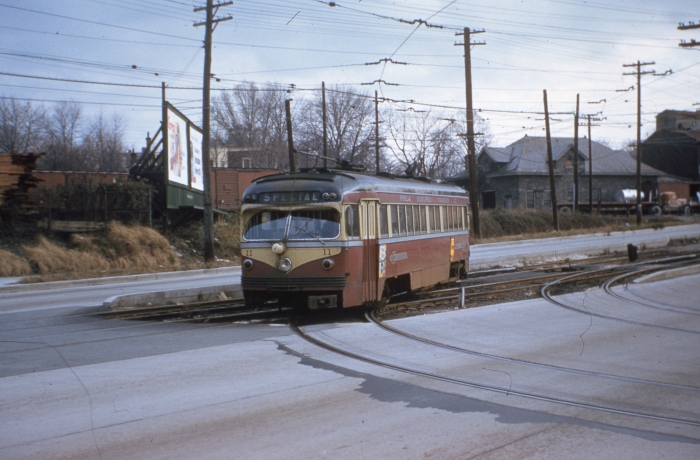
PST St. Louis car 11 on West Chester Pike near the Llanerch Depot on November 26, 1954. (Photo by Ray DeGroote)
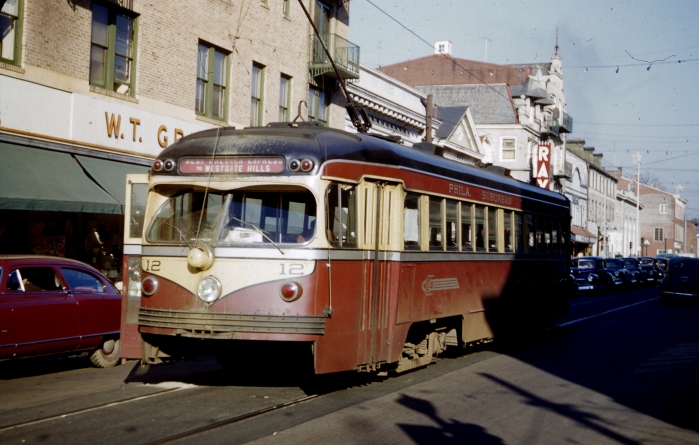
PST 12 in West Chester.
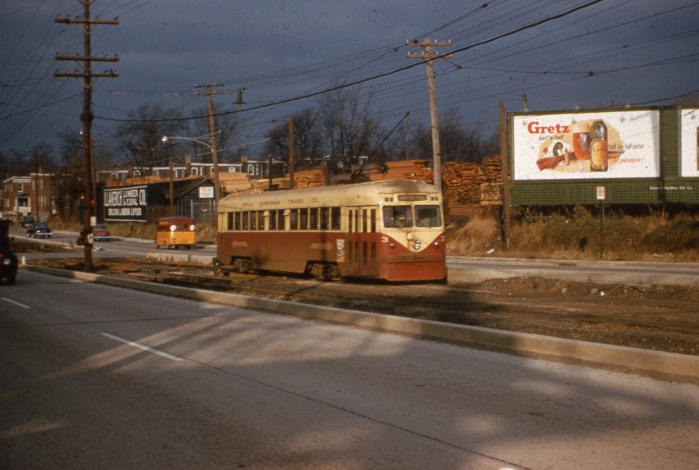
PST Brilliner 3 on West Chester Pike near the Llanerch Depot on November 26, 1954. (Photo by Ray DeGroote)
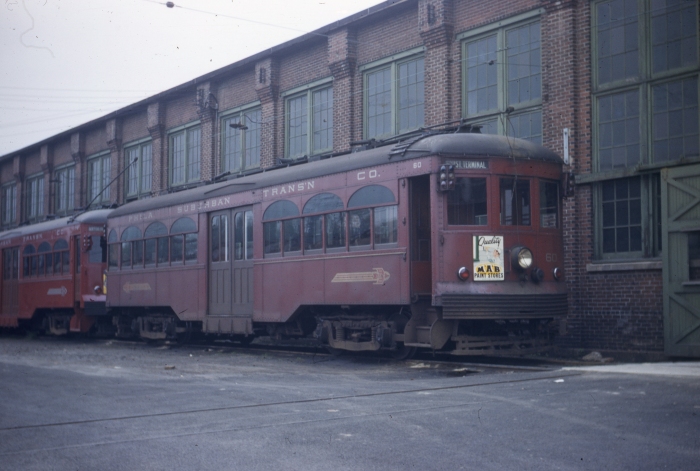
PST 60 at Llanerch car barn on May 15, 1949.
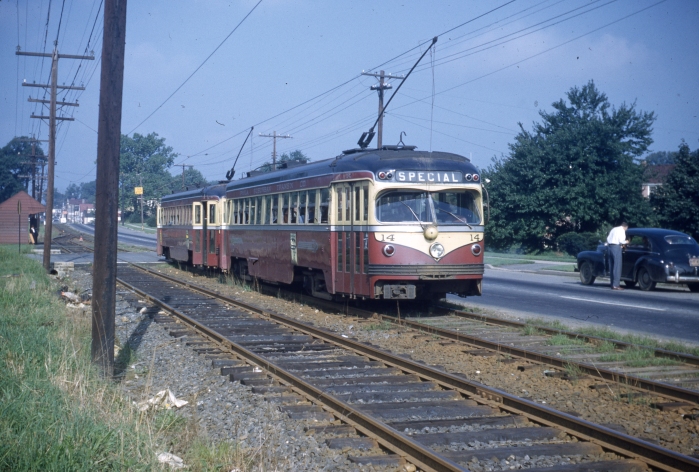
PST 24 and 14 at Westgate Hills on the West Chester line on September 4, 1950.
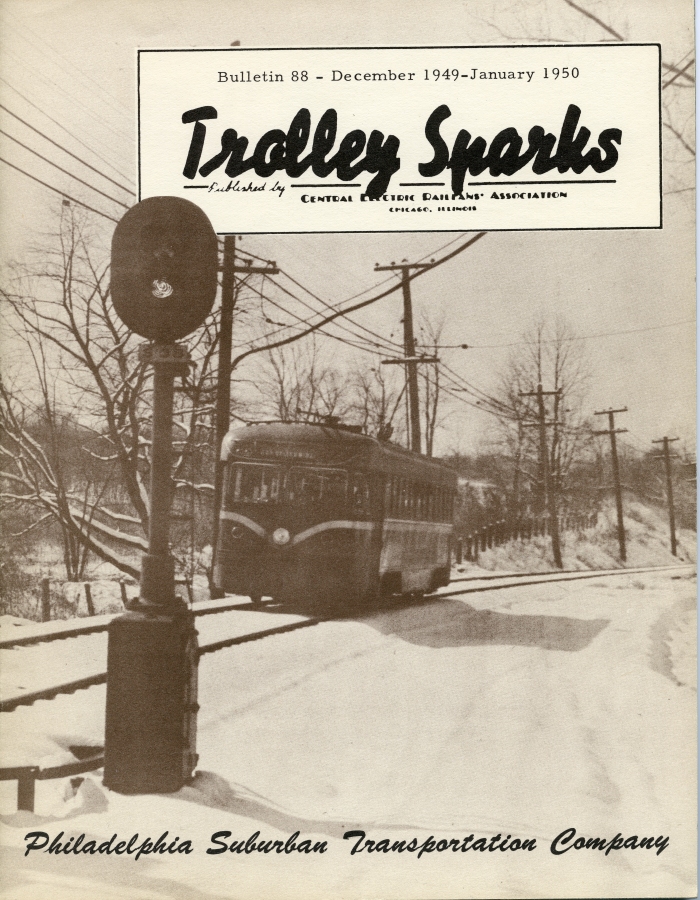
The Red Arrow trolley lines were featured in CERA Bulletin 88.
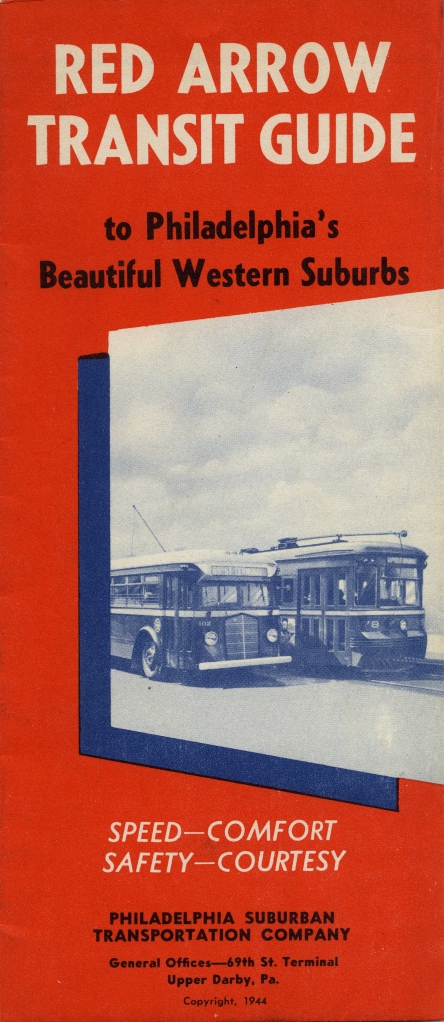
A 1944 map showing Red Arrow’s extensive network of suburban bus and trolley lines radiating out from 69th Street Terminal.
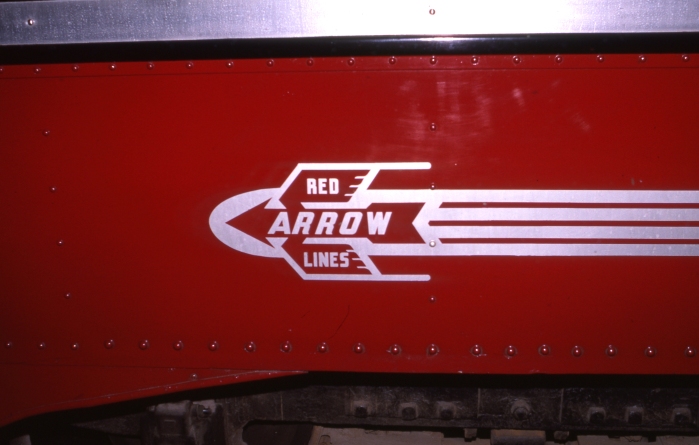
The “Red Arrow” brand, used by Philadelphia Suburban between 1937 and 1970, when the private operator was sold to SEPTA, a public agency.
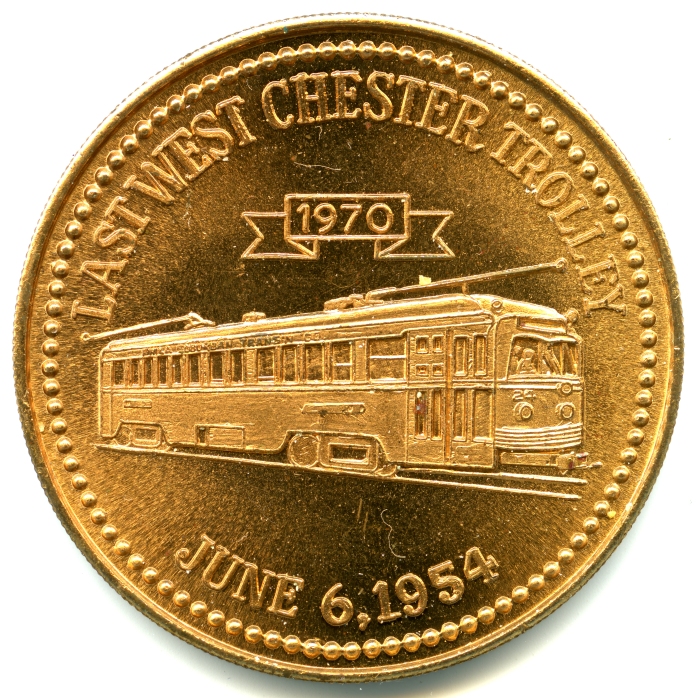
In 1970, the West Chester (PA) Coin Club minted a token commemorating the last West Chester trolley 16 years earlier.